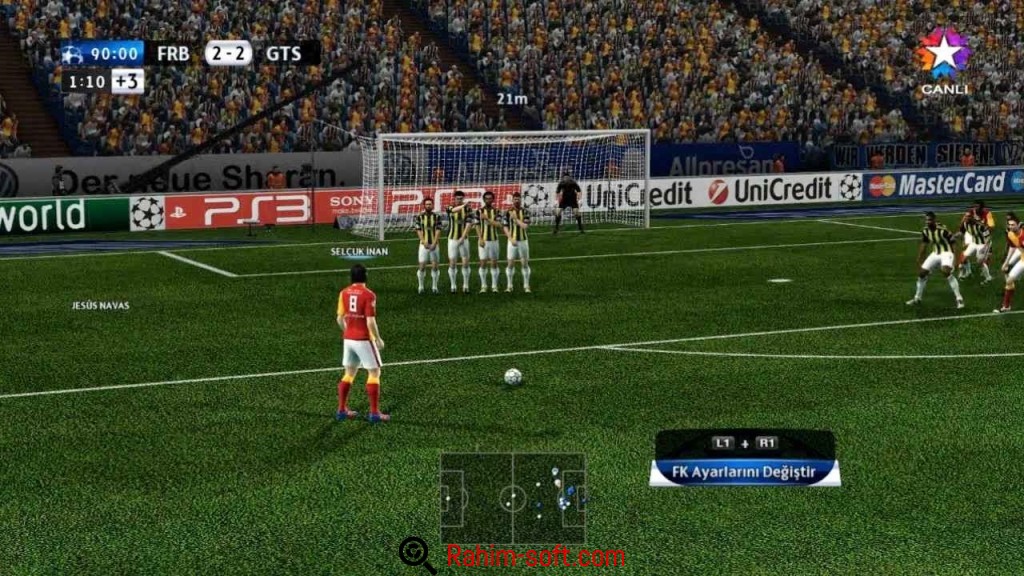

Substitutions and changes of formation can make all the difference in a tightly fought contest. The upshot of this is that game management is more crucial than ever. Like last year’s game, some players are clearly overpowered, but then that’s true to life: Cristiano Ronaldo and Lionel Messi are close to unplayable, but it’s up to you to find a way to deal with them, whether it’s doubling-up on markers, cutting off their supply lines – or even tactical fouling. One opponent was able to use this to his advantage, regularly finding gaps down the channels until I made a change to tighten things up. It works both ways, of course: Vincent Kompany might be imperious in the air, but his tendency to step up and try to win the ball early can be exploited by clever tactics.

But I was thrilled to see the tenacity of Pablo Zabaleta equally well represented, while Aleksandar Kolarov’s marauding runs down the left would invariably result in a cross whipped in with a palpable increase in pace from the norm. As a Manchester City fan, I naturally gravitated towards them for my first few matches I expected to find Yaya Toure would be hard to stop when galloping at defenders, and that a typical David Silva through-ball would be a thing of measured perfection. The idea of player personality goes well beyond the game’s biggest stars. Talking of ‘keepers, they’re more alert and reactive this time around, scrambling across their goal to palm away daisy-cutters, and getting up quickly to lunge at loose balls they’ve just parried. Tevez in particular has a Howitzer of a right foot, and while you’d ordinarily expect the ball to rise the longer you press the shot button, it’s a joy to see him thundering a low-bouncing strike below the dive of the goalkeeper, fizzing off the surface to send the net billowing. Shooting is similarly contextual, and the type of strike noticeably varies from player to player. You might win the odd free-kick with a bit of trickery, but if you’re planning to use his pace, you’re better off playing the ball in behind for him to sprint onto – aim through balls too close to defenders and he’ll be bundled off it all too easily. There’s a clear difference between these players and someone like Raheem Sterling, who has whippet-like pace, but his slight build means he’s outmuscled much more easily. Anyone with a low centre of gravity – like Alexis Sanchez, Carlos Tevez and Sergio Aguero – is a joy to control, as these players have the balance to skip over challenges, occasionally stumbling when clipped but always striving to stay on their feet. The attacking game has been tweaked, too, and it’s here you’ll first notice the effort Konami has invested in individualising players. By the same token, if you repeatedly jab X while running alongside an opponent to attempt a standing tackle, rather than waiting for the right moment to step in, then you’re bound to concede a free-kick. Referees are thankfully more lenient than in real life: you can barrel into a challenge at speed, cleaning out the player as well as winning the ball, but as long as you make contact, it won’t automatically draw a foul. A clean slide tackle is particularly satisfying: contingent on player momentum, they’re among the most tangible demonstrations of your ability to read the game and your opponent. Context is everything: whether you win or lose the ball in a challenge is dependent on a number of factors, taking into consideration the skill of the players involved and their position in relation to the ball and one another. Before, it often felt like outcomes were binary, but it’s no longer quite so predictable. It’s most obvious when players jostle for possession (and, indeed, for position). For starters, there’s a much stronger sense of physicality this year.


 0 kommentar(er)
0 kommentar(er)
